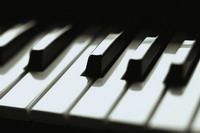Piano Sheets > George Khoury Sheet Music > Sea Of Love (ver. 1) Piano Sheet
Sea Of Love (ver. 1) by George Khoury - Piano Sheets and Free Sheet Music

About the Song
"Sea of Love" is a song written by John Phillip Baptiste (aka Phil Phillips) and George Khoury. Phillips' 1959 recording of the song peaked at #1 on the U.S. Billboard R&B chart and #2 on the Billboard Hot 100.[1] In the UK, Marty Wilde covered the song, and Phillips' version failed to chart there. It was the first and only top 40 chart song for Phillips, who never recorded another hit.[2]
The song has been covered by a number of artists since then, most notably by The Honeydrippers, whose version (from the album The Honeydrippers: Volume One) reached #3 on the Billboard Hot 100 chart and #1 on the adult contemporary chart in 1984.[3] Tom Waits gave the song a darker twist for the soundtrack to the 1989 Harold Becker film Sea of Love starring Al Pacino and Ellen Barkin, and Waits included it on his 2006 collection Orphans: Brawlers, Bawlers & Bastards. "Sea of Love" had made the Top 40 just one other time, when Del Shannon took it to #33 in 1981.
Baptiste, who was working as a bellboy in Lake Charles, Louisiana, USA, wrote "Sea of Love" for a love interest. He was introduced to local record producer George Khoury, who brought Baptiste into his studio to record the song. At Khoury's request, Baptiste took the stage name of Phil Phillips. The song, originally credited to Phil Phillips with The Twilights, was released on a small record label owned by Khoury, but due to its success was eventually leased to Mercury Records. Despite the song's success, Phillips claims that he has only ever received US$6,800 for recording it.[2]
Download this sheet!
About the Artist

Random article
Advantages of accessing free sheet music online The internet has pervaded all aspects of our lives and when it comes to learning how to play piano this is no different. There are virtually hundreds of websites, which offer you free sheet music to help you learn how to play the piano. There are several advantages to getting online sheet music versus conventional hard copy versions.
No storage issues
One of the biggest advantages is that online sheet music does not occupy physical space as documents do. This helps you avoid unnecessary clutter
(More...)
